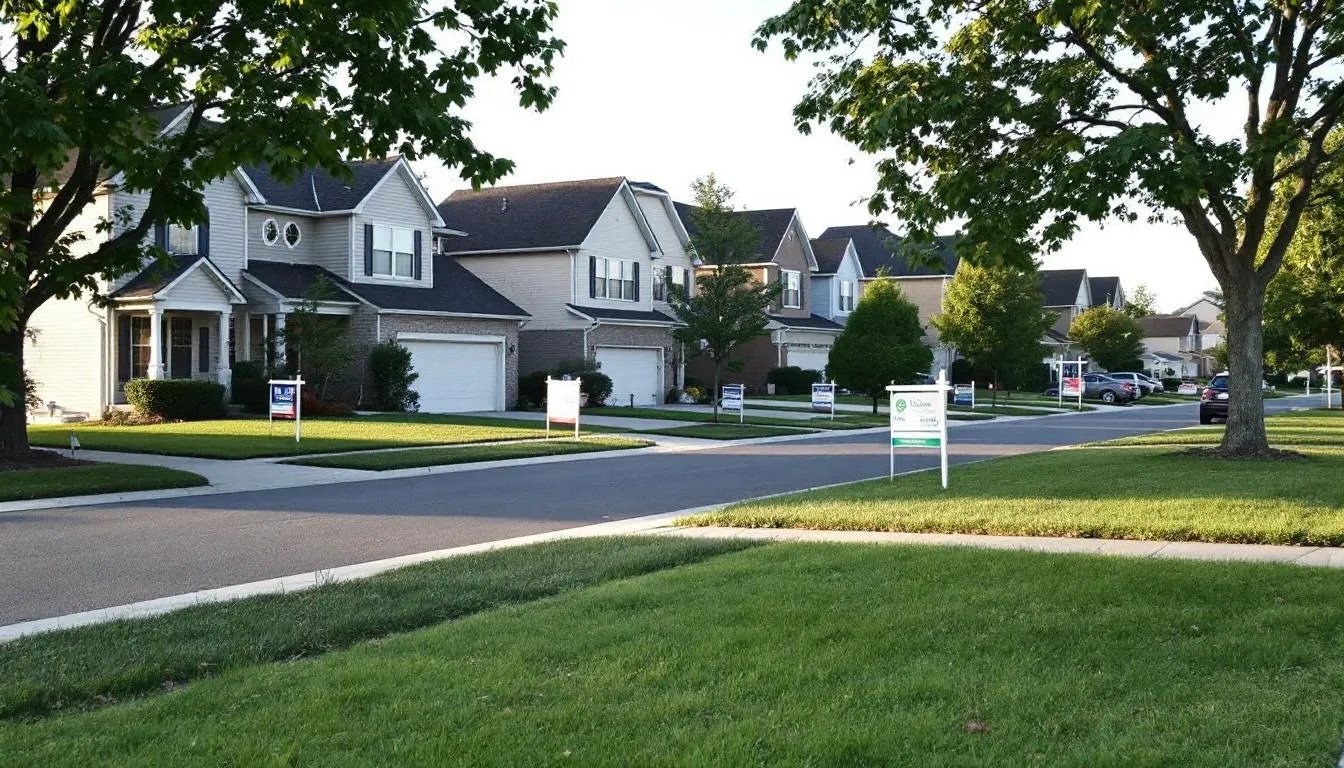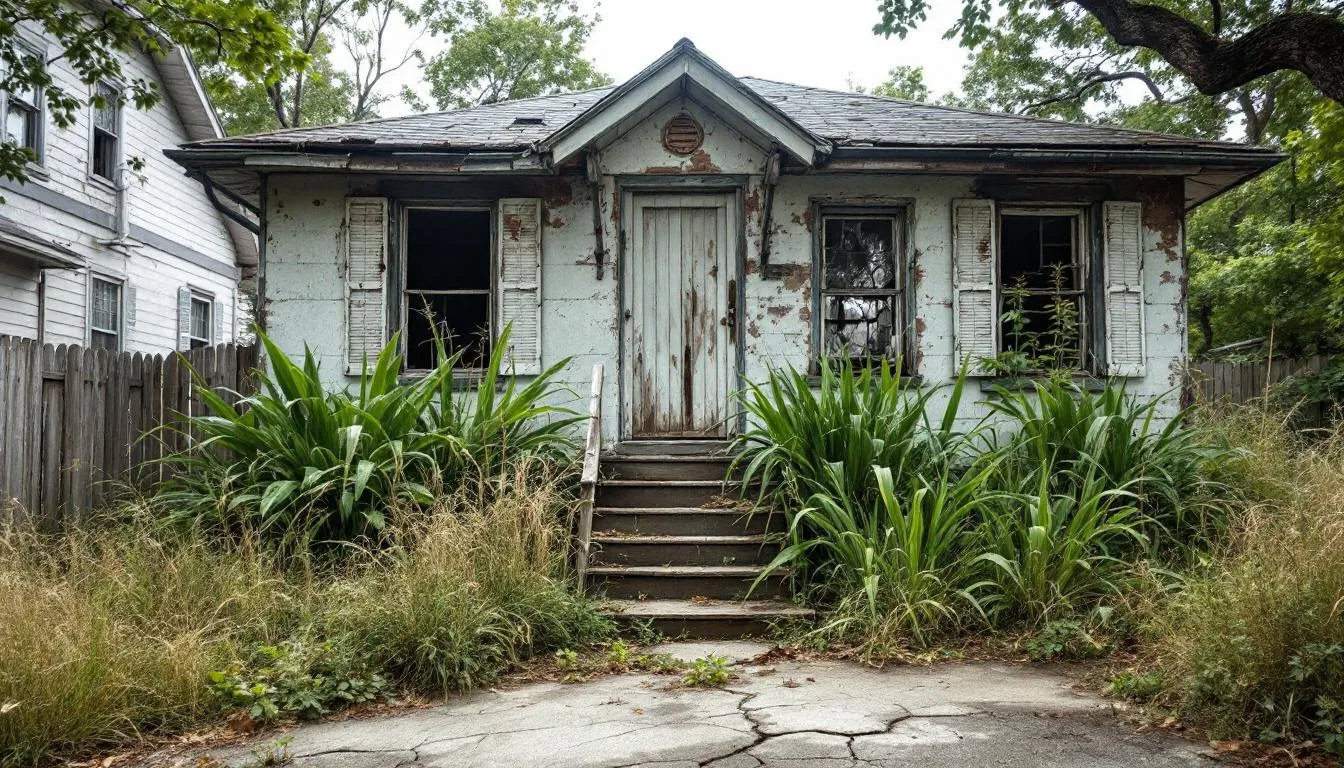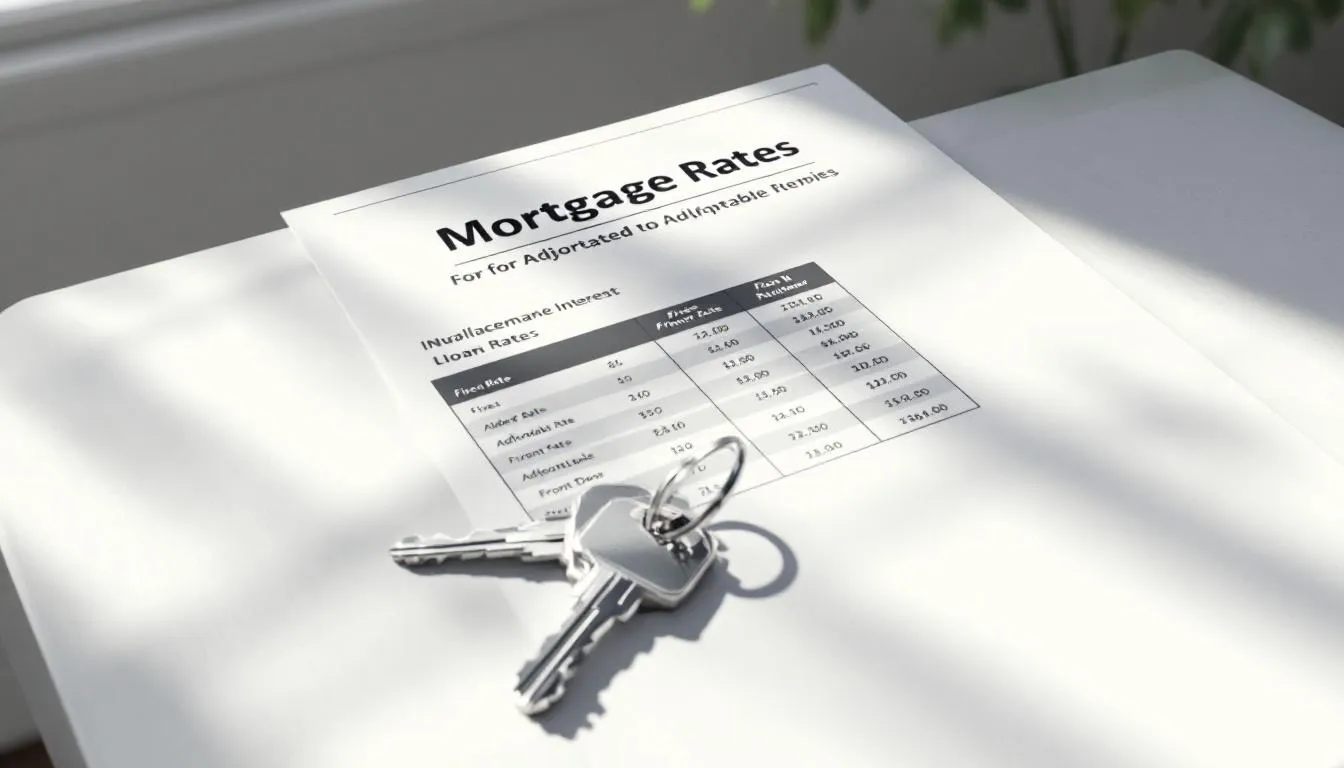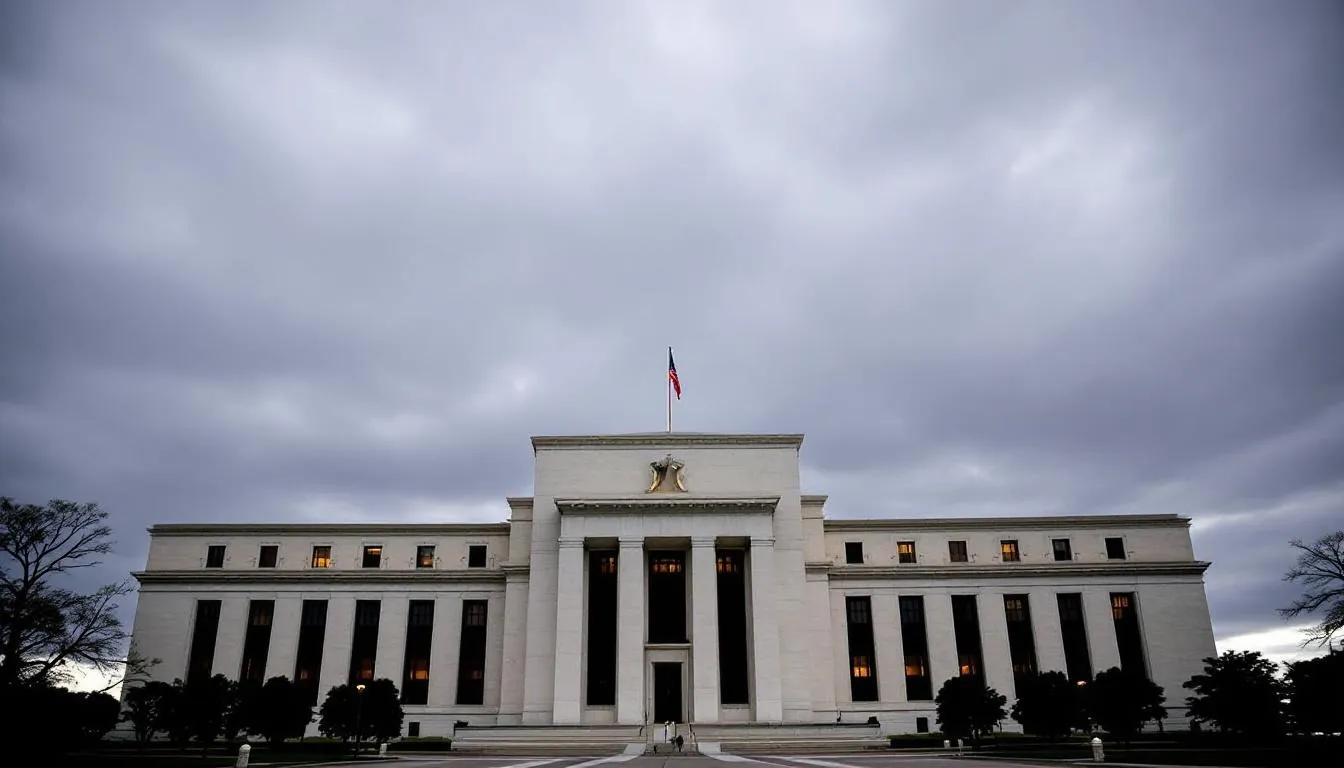- 🏠 Housing inventory growth slowed from 33% to just 17.66% year-over-year in 2025.
- 📉 Mortgage rates dropped to 6.34%, driving buyer activity but not increasing listings.
- 💸 41.8% of homes on the market have had price reductions, indicating affordability challenges.
- 🔎 Purchase applications have increased for 35 consecutive weeks in 2025.
- ⚖️ A psychological standoff between sellers and buyers is halting housing inventory growth.

Housing Inventory Growth: Why Is It Slowing?
The housing market started 2025 with high hopes because of an expected rise in housing inventory. This came after years of low supply due to the pandemic. But halfway through the year, the growth stopped. Mortgage rates went down, and more buyers showed interest. Even so, housing supply isn't growing as fast as many thought it would. To understand why housing inventory has stopped growing, we need to look at how mortgage rates work, why sellers hold back, and what's happening in the economy and local markets. Let's look at the main reasons for today's changing housing market.

Slower Inventory Growth: The Numbers Behind It
At the start of 2025, housing inventory was growing quickly, up 33% from the year before. This big jump looked like a turning point for a housing market that struggled with low supply since 2020. But when fall came, the growth slowed. By early October, the inventory growth rate fell sharply to just 17.66%.
This slowdown isn't just a strange number. From September 26 to October 3, the total number of active listings only went up a little, from 862,575 to 863,972. This roughly 0.16% increase is quite low and very different from 2024. In that same time, inventory grew from 731,010 to 734,257.
Such slow housing inventory growth shows more than just a normal seasonal dip. It points to big changes in how people act, especially those who might sell their homes.

New Listings Drop: Why Homeowners Are Hesitating
New home listings usually peak in early summer. This is when families want to move before the new school year and markets are busiest. In 2025, the peak happened unusually early. The week of May 23 saw just 83,143 new listings. This high point was both early and lower than the usual summer range of 80,000 to 100,000 listings each week.
After that, the numbers kept going down. By early October, new listings had dropped to the low 60,000s, only 64,328 last week. This early peak and drop show that sellers are less willing to list their homes.
What's causing this pullback?
Many homeowners got mortgage rates around 3% during the pandemic boom. Current mortgage rates are still over 6%. So, selling and buying again – meaning trading a 3% mortgage for a 6% one – is not good financially. This is called the "rate lock-in effect." It means many possible sellers are not moving.
There's also a mental block. When the economy or politics are unclear, homeowners often become careful about risks. Going back into a busy market, often with higher prices and more costly loans, makes the whole process harder than usual.

Falling Mortgage Rates Spark Demand — But Not Listings
The second half of 2025 helped worried buyers. Mortgage rates have fallen from their earlier highs, falling to 6.34%, the lowest in months. This drop has been enough to bring back excitement among buyers. And then, the last nine weeks of the year saw the most purchase applications so far in 2025.
But surprisingly, this hasn't led to more homes for sale.
For sellers who already have very low mortgage rates, 6.34% still feels expensive. So, even with better loan conditions, sellers haven't changed their minds. Buyers are back—rates have gone down a bit and the job market is still pretty stable. But the properties they want to buy aren't showing up fast enough.
Finance markets are also holding pretty steady. The 10-year Treasury yield, a main number that often moves mortgage rates, is at 4.12%. This steady rate has helped interest rates drop slightly. But it hasn't gone far enough to make many people sell.

Rising Price Reductions Show Demand is Still Price Sensitive
Another sign that today's housing market is changing is the rise in price reductions.
You might think prices would go up when there's low supply. But the opposite is happening. In the latest week, 41.8% of homes for sale had a price cut. That's a clear jump from the 39% seen in the same week last year.
Why are so many home prices being cut?
Some sellers started with high hopes. These were probably set by the excitement of earlier months when demand was growing fast. But, buyers find it hard to afford homes because interest rates stay high. So, those hopeful list prices cannot last. Sellers have to change what they expect.
This trend is a clear sign that people still want to buy, but only at the right prices. Homes priced too high often don't sell quickly. They end up dropping their prices to attract more careful buyers.

Mortgage Spreads: The Invisible Hand of Affordability
To truly understand how mortgage rates are affecting housing supply, you have to think about mortgage spreads. This is the difference between the interest rate on 10-year U.S. Treasury notes and typical 30-year fixed mortgage rates.
In a healthy market, this difference usually sits between 1.60% to 1.80%. But during hard financial times or big market changes, that difference can grow. This leads to higher mortgage rates, no matter what Treasury rates do.
Throughout 2025, these spreads have gotten better. They are now within 0.20% of the usual range. This might seem small, but it's actually a big mental and real benefit for the housing market. If these spreads had stayed as wide as they were in late 2023, mortgage rates today would be almost a full percentage point higher—about 0.91%.
Better spreads mean interest rates match economic signs more closely. This makes them a bit easier to predict and less likely to jump up from fear. If spreads become fully normal and Treasury rates stay steady, we could see mortgage rates fall into the 5.75% to 5.95% range.
That kind of movement could be a big reason for possible sellers to list homes again. This would cause new homes to be listed and push housing supply up.

Buyer Demand Is Up — Which Further Shrinks Supply
Even though seller activity has stopped growing, buyers are getting more excited.
Mortgage purchase application activity—a way to see future market demand—has grown year-over-year for 35 weeks in a row. What's more, the last 22 weeks have grown by more than 10%.
This steady buyer demand is actually using up the few homes for sale faster than new ones appear. As each new listing goes under contract, the number of active listings shrinks. This makes it seem like inventory growth has stopped.
In short, demand is more than supply again. But instead of creating the bidding wars of 2021 and 2022, it's creating a situation where fewer homes are available. This leaves buyers who want to buy with few choices.

Pending Sales Reflect Emerging Buyer Activity
Another important number is pending home sales. These are properties that have gone under contract but have not yet closed. This number is a good sign of what the market will do soon.
The most recent data shows 64,232 pending sales. This is more than the same time in 2024, when pending sales hit 61,043. This makes it the best weekly result for pending contracts so far in 2025.
These strong numbers confirm that buyers still want homes, especially with mortgage rates dropping a little. Buyers are acting faster, buying homes that fit their price and location needs quickly.
But this continued demand isn't being matched by the supply. This will likely stop housing supply from growing much in the coming months, unless something changes.

Las Vegas Market Snapshot: A Seller’s Market in Waiting
The problems affecting national inventory trends are very clear in key markets like Las Vegas. Local real estate expert Steve Hawks says sellers in the area are still not eager to list. Many of them got mortgage rates of 2% to 3% during the pandemic.
The investment scene has changed, too. It costs more to hold properties and get loans than in past investment booms. So, risky buying is slowing down. There are fewer flippers, fewer people chasing quick cash, and fewer fast-return projects.
New home construction is helping ease the problem. Builders are trying to meet demand with new homes. But it simply isn't fast or widespread enough to make up for the lack of existing homes for sale.
Las Vegas keeps bringing in buyers from higher-priced West Coast cities. But without enough homes for sale, the market can't grow, even with healthy demand.

The Impact of the Fed and Political Uncertainty
There's another unknown factor in this housing supply puzzle: the Federal Reserve and political problems.
The U.S. government shutdown has stopped important economic reports from coming out. These include jobless claims and the Consumer Price Index (CPI). These numbers usually guide the Federal Reserve’s choices on interest rates. And then, these choices directly affect mortgage rates.
Without these reports, the Fed might wait to act, keeping rates unsure. This unclear situation quickly affects the housing market. Without a clear idea of where interest rates are going, both buyers and sellers stay in holding patterns.
This "wait and see" environment leads to fewer home sales, lower new listings, and continued lack of growth in overall housing supply.

Buyer and Seller Psychology: A Pause in the Air
Economic signs are important. But housing decisions often come down to how people feel and when they act.
Right now, buyers and sellers are both waiting:
- Buyers expect better conditions later—lower mortgage rates, more listings, or better deals.
- Sellers don’t want to give up low-rate mortgages. They also fear going back into a worse situation.
This mental disagreement helps cause fewer homes to be listed and slower inventory growth. Everyone is waiting for "the right time." And then, until there's a clear policy change or a major market shift, this standoff will likely continue.
Is This a Crisis or a New Normal?
The idea of a "housing inventory crisis" is scary, but the real situation is more complex.
Yes, housing inventory growth has slowed. But we are still at higher levels than during the very tight market of 2021–2022. Instead of crashing, the market appears to be going into a time of slow adjustment.
Home listings aren't jumping up because sellers are still careful, and buyers are still picking and choosing. It may take low mortgage rates for a long time, clearer economic conditions, and stronger reasons for sellers to list. These things could push housing inventory back to normal levels.
What Buyers and Sellers Should Do Right Now
This isn't the time to react quickly. Planning ahead will work better than trying to time the market.
For sellers:
- Start getting ready now—clean out, fix things, and check similar home sales.
- Be ready to act if mortgage rates drop into the 5% range.
- Think about renting your current home and buying elsewhere to keep your low mortgage rate.
For buyers:
- Watch for homes with many price reductions.
- Lock in mortgage rates when they dip to keep things affordable.
- Be flexible with when you buy—holidays can be better times to buy with fewer other buyers.
In Las Vegas, Steve Hawks says cash buyers and renters are in better spots right now. If you don't need a loan or already own an investment property, the current situation offers special benefits.
Takeaways from Steve Hawks on Navigating the Vegas Market
Steve Hawks gives this advice for Southern Nevada’s real estate market:
- Look for homes with lower prices—they often mean sellers want to sell.
- Track the mortgage spread each week—it shows where rates are going.
- Get your loan approved beforehand and plan your steps—moving fast is important in busy markets.
- Sellers should watch rate trends closely and be ready to list when spring activity rises.
Housing inventory may be stuck for now, but it’s not frozen. This changeover is creating what could be a steadier market later. Buyers and sellers who plan ahead—with facts, money, and flexibility—will be in the best place to use what comes next.
Citations:
Federal Reserve Bank of St. Louis. (2025). 10-Year Treasury Constant Maturity Rate [GS10]. Retrieved from https://fred.stlouisfed.org/series/GS10
Mortgage Bankers Association. (2025). Weekly Mortgage Applications Survey. Retrieved from https://www.mba.org
National Association of Realtors. (2025). Existing-Home Sales Data. Retrieved from https://www.nar.realtor/research-and-statistics/housing-statistics

